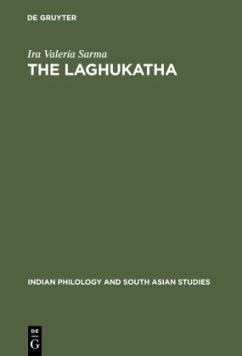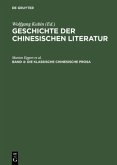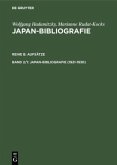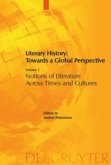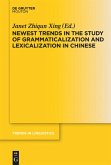The book presented here is the first work of Western literary criticism to examine the Hindi laghukatha - a modern Indian prose genre that has been published since the 1970s in Hindi newspapers and magazines and is characterised by its concise form (500 words on average) and socio-political agenda. The importance of the genre within the Hindi literary scene lies in the fact that the laghukatha is based on indigenous genres which have been modernised, whereas the Hindi short story and the novel are Western genres that have been appropriated and Indianised. A thorough investigation of around 280 primary texts accompanied by an evaluation of the relevant Hindi criticism gives a comprehensive literary analysis of this genre and its historical development. This allows, in conclusion, to delineate an "ideal type" of laghukatha, suggesting a range of compulsory, desirable and optional features. English translations of almost 50 representative Hindi texts complete the picture and thus provide an insight into this genre so far unknown to a Western audience.
Das vorliegende Buch beschäftigt sich mit der Laghukatha, einer Prosagattung der modernen Hindiliteratur, die sich durch extreme Kürze (durchschnittlich 500 Wörter) sowie sozial-politisches Engagement auszeichnet und seit den 70er Jahren des 20. Jahrhunderts in hindisprachigen Tageszeitungen und Zeitschriften veröffentlicht wird. Die Bedeutung der Laghukatha im Kontext der modernen Hindiprosa liegt darin, daß sie als Gattung in der indigenen Tradition verwurzelt ist: indische, mündliche wie schriftliche Formen sind modernisiert worden, während es sich z.B. bei Hindi-Kurzgeschichten und -Romanen um aus dem Westen importierte Gattungen handelt, die an die eigenen Bedürfnisse angepaßt und indisiert wurden. Eine ausführliche Analyse von ca. 280 Primärtexten sowie eine Kritik der relevanten Sekundärliteratur in Hindi geben einen umfassenden Überblick über die literarischen Eigenarten und die historische Entwicklung dieser Gattung und ermöglichen es schließlich, die Charakteristika einer "idealtypischen" Laghukatha darzustellen. Das Bild wird durch Übersetzungen von ca. 50 repräsentativen Texten aus dem Hindi ins Englische abgerundet, die einer westlichen Leserschaft erstmalig einen Einblick in diese Gattung ermöglichen.
Das vorliegende Buch beschäftigt sich mit der Laghukatha, einer Prosagattung der modernen Hindiliteratur, die sich durch extreme Kürze (durchschnittlich 500 Wörter) sowie sozial-politisches Engagement auszeichnet und seit den 70er Jahren des 20. Jahrhunderts in hindisprachigen Tageszeitungen und Zeitschriften veröffentlicht wird. Die Bedeutung der Laghukatha im Kontext der modernen Hindiprosa liegt darin, daß sie als Gattung in der indigenen Tradition verwurzelt ist: indische, mündliche wie schriftliche Formen sind modernisiert worden, während es sich z.B. bei Hindi-Kurzgeschichten und -Romanen um aus dem Westen importierte Gattungen handelt, die an die eigenen Bedürfnisse angepaßt und indisiert wurden. Eine ausführliche Analyse von ca. 280 Primärtexten sowie eine Kritik der relevanten Sekundärliteratur in Hindi geben einen umfassenden Überblick über die literarischen Eigenarten und die historische Entwicklung dieser Gattung und ermöglichen es schließlich, die Charakteristika einer "idealtypischen" Laghukatha darzustellen. Das Bild wird durch Übersetzungen von ca. 50 repräsentativen Texten aus dem Hindi ins Englische abgerundet, die einer westlichen Leserschaft erstmalig einen Einblick in diese Gattung ermöglichen.
"Sarma is a keen and attentive reader who brings out many interesting aspects in her analysis of the directness and rhetorical effect of the sampled texts. The argument in both the historical and literary analysis of Laghukatha is made with great clarity and insistence. The chapters on the language of Laghukatha show her in-depth technical understanding of the language and its literature, leading to an insightful analysis of the workings and structures of this genre."
Thomas de Bruijn in: South Asia Research 1/2007
"Sarma is a keen and attentive reader who brings out many interesting aspects in her analysis of the directness and rhetorical effect of the sampled texts. The argument in both the historical and literary analysis of Laghukatha is made with great clarity and insistence. The chapters on the language of Laghukatha show her in-depth technical understanding of the language and its literature, leading to an insightful analysis of the workings and structures of this genre."Thomas de Bruijn in: South Asia Research 1/2007
Thomas de Bruijn in: South Asia Research 1/2007
"Sarma is a keen and attentive reader who brings out many interesting aspects in her analysis of the directness and rhetorical effect of the sampled texts. The argument in both the historical and literary analysis of Laghukatha is made with great clarity and insistence. The chapters on the language of Laghukatha show her in-depth technical understanding of the language and its literature, leading to an insightful analysis of the workings and structures of this genre."Thomas de Bruijn in: South Asia Research 1/2007

